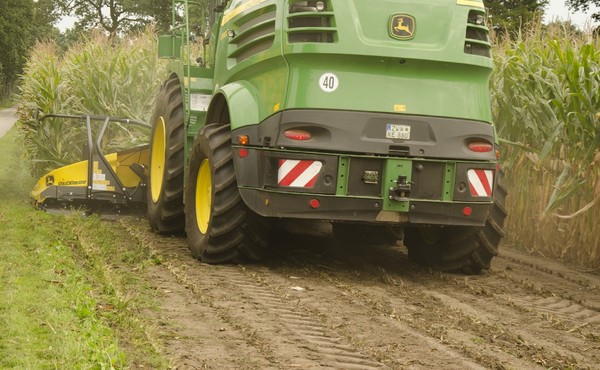
StalkBuster, mechanical treatments against corn parasites
John Deere won the Gold Medal at the Agritechnica Innovation Award thanks to the StalkBuster system, developed in synergy with Kemper, a German company specializing in the production of rotary heads. Integrated into a corn harvesting head, the StalkBuster technology has been developed with the aim of destroying the habitat where one of the most dangerous corn parasites proliferates, the pyralid (belonging to the Lepidoptera order), and to prevent the formation of the fusarium fungus in the soil. The device designed by John Deere and Kemper is able to shred (directly under the shredder head) every single row of stumps before the wheels of the equipment or the transport vehicle flatten them to the ground. With this particular ground-level shredding and the complete destruction of plant residues, Stalk- Buster succeeds not only in destroying the environment in which the pyralid larvae develop, but also in eliminating plant residues that may cause subsequent soil processing problems. “The device - explains John Deere with a technical note - is equipped with a special oscillating gear box that enables the adjustment of the head optimally on each row, while a pneumatic pressure system adjusts the device to the shape of the terrain. It is precisely these constructive solutions that allow the StalkBuster to work so close to the ground.” The strengths of the technology launched at Hanover include the minimized energy consumption because, according to the manufacturer’s estimates, there is no need for more than 4 horsepower per row. This is in addition to the advantages related to reducing the chemical treatments. “In the areas most affected by the corn pyralid - continues John Deere’s note - the StalkBuster reduces the need for chemical pesticide operations, while also facilitating the subsequent soil processing. The overall economic advantage can be estimated at 84 euros per hectare compared to the usual treatments.”








